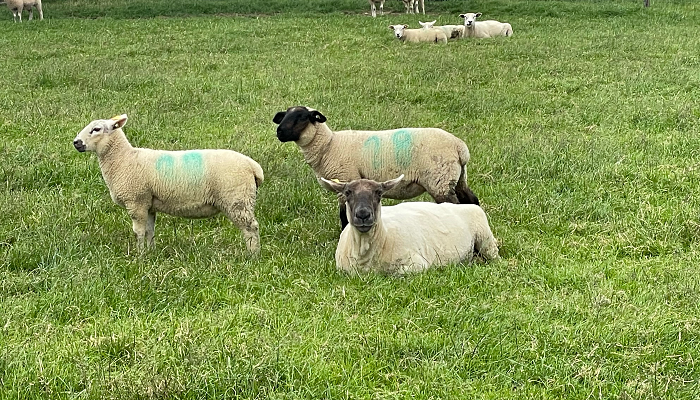Sheep scheme tasks and deadlines

Are you enrolled in the Sheep Improvement Scheme or National Sheep Welfare Scheme? Eamonn Dempsey, a B&T Drystock Advisor based in Tralee, provides a timely reminder of the key scheme actions and their completion dates.
The Sheep Improvement Scheme (SIS) and the National Sheep Welfare Scheme (NSWS) together provide a financial incentive of €25 per ewe for the promotion of animal health and welfare through selected scheme actions. It is timely at this stage of the year to review actions chosen and take note of deadlines to ensure scheme compliance.
Sheep Improvement Scheme
Actions in the Sheep Improvement Scheme relevant to both lowland and hill sheep farmers have certain requirements and deadlines:
- Lameness control
- For the lameness control action, a minimum of 5 lameness examinations are carried out to identify cause and offer suitable treatment. These assessments can be carried out at least once between mating and lambing, May/June, July/August, prior to mating and one other time in the calendar year.
- Parasite control
- For parasite control, lowland flocks must take a minimum of 2 faecal egg counts per annum from lambs and submit to an approved laboratory for testing between 1st June and 30th September. The second faecal egg count must be carried out at least 7 days after the first.
- Hill flocks are required to carry out one faecal egg count within 4 weeks post weaning.
- The faecal egg count identifies the worm burden in the flock, so an informed decision can be made regarding treatment.
- Flystrike control
- For the flystrike control action, sheep must be assembled at least once in the period 1st of June to 30th September to remove faecal material around the hind quarter from any affected sheep.
- Mineral supplementation and meal feeding of lambs
- The mineral supplementation of lambs pre-weaning action must be carried out at least once during the grazing season to address mineral deficiencies of lambs in hill flocks.
- Meal feeding hill lambs post weaning involves supplementation of lambs with compound feed for 4 weeks post weaning.
- Mineral supplementation of ewes and scanning
- For the mineral supplementation of ewes post mating action, ensure the duration of cover is at least the first 60 days from the date of ram turnout.
- Scanning 70 to 100 days post ram turnout and recording of results allows ewes to be grouped and managed in accordance with litter size.
- Genotyped ram action
- Farmers are also required to carry out the genotyped ram action. Farmers with less than 150 breeding ewes must purchase a genotype ram once in the first 3 years of the scheme; farmers with greater than 150 breeding ewes must purchase a genotyped ram in two different years over the lifetime of the scheme.
- The genotyped ram must be purchased within the year selected and be SIS eligible on the day of purchase – use the Sheep Ireland Ram Search facility to verify ram eligibility. If the ram is a hill flock breed, e.g. Scottish Blackface, the ram only needs to be DNA sire verified by Sheep Ireland and be type one, two or three for scrapie at the time of purchase.
National Sheep Welfare Scheme
Farmers in the National Sheep Welfare Scheme must complete two mandatory actions from the following options: Shearing, Body Condition Scoring and Clostridial Vaccination of ewes. Applicants had the option to top up their payment if they choose to complete one further voluntary option from either foot-bathing or plunge dipping to control external parasites.
- Shearing
- Evidence of completion of the shearing action includes receipts from a shearing contractor or evidence of the sale of wool to a wool merchant.
- Body condition scoring
- Body condition scoring must be carried out twice. The first assessment must be carried out between the 15th of April and the 15th of July 2025, and the second assessment must be carried out between the 1st of August and the 17th of October 2025.
- Vaccination
- For the vaccination of breeding ewes against clostridial diseases +/- Pasteurella option, farmers not currently vaccinating ewes may vaccinate all lambs from the payable number of breeding ewes as an alternative.
- Plunge dipping
- Plunge dipping, if selected, must be carried out on the breeding ewes where the flock owner has access to a plunge dip tub or a mobile plunge dipping service.
- Foot-bathing
- Foot-bathing should be carried out a minimum of twice over the period from the 1st of April to the 1st of October and a minimum of two weeks should be left between foot-bathing.
Completion deadlines
National Sheep Welfare Scheme actions selected must be completed by 17th October 2025, however applicants who are unable to complete their chosen actions by this date could select the later date of 28th November 2025 at application stage.
In addition to completion of your chosen actions in the Sheep Improvement Scheme and the National Sheep Welfare Scheme, it is important to maintain receipts, update the scheme action record book and co-operate with inspections.
If your number of breeding ewes fall below the scheme payable number or other issues arise, contact your advisor or the Sheep Scheme Section in the Department of Agriculture for support.
More from Teagasc Daily: Less meal and earlier finishing with diverse swards
More from Teagasc Daily: Forage crops: An option for finishing hill lambs?
